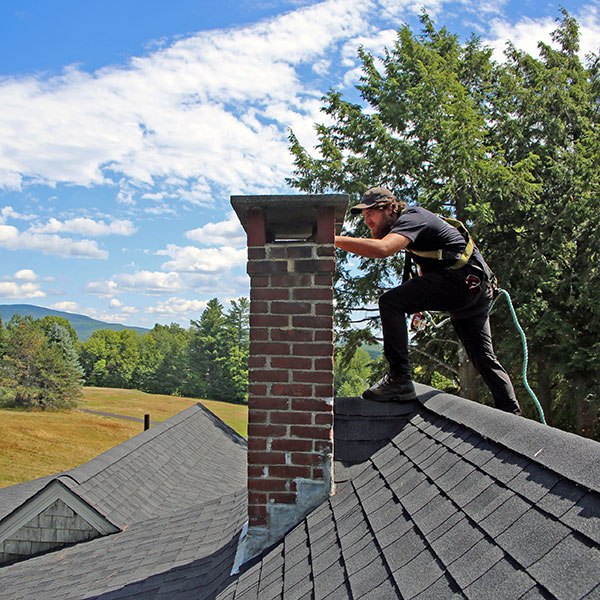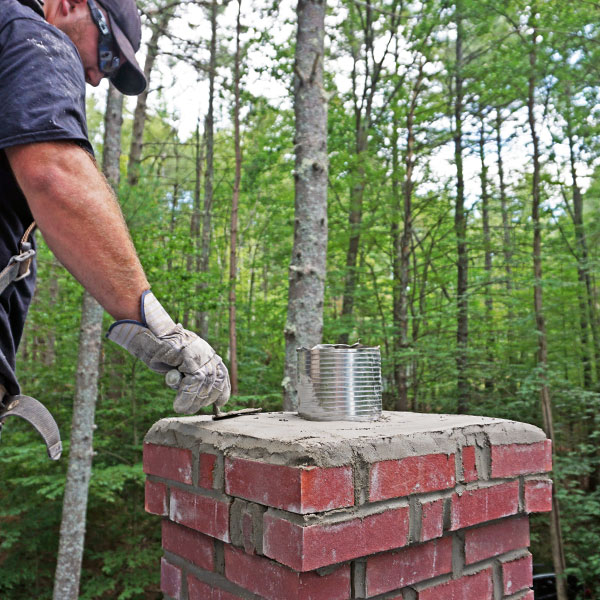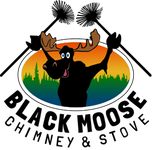 The ideal chimney inspection turns up no problems, and the chimney inspector gives it a complete bill of health. Unfortunately, that’s not always the case. Many things can happen to a chimney over time, especially one that’s used regularly. Here are some chimney issues inspectors often uncover during routine chimney inspections.
The ideal chimney inspection turns up no problems, and the chimney inspector gives it a complete bill of health. Unfortunately, that’s not always the case. Many things can happen to a chimney over time, especially one that’s used regularly. Here are some chimney issues inspectors often uncover during routine chimney inspections.
Leaky chimney
Chimney leaks are common and can be caused by damaged masonry, spalling bricks, cracks in the chimney crown, a faulty or missing chimney cap, damaged roof flashing and other problems. Your chimney inspector will look for water in the firebox, strong odors coming from the fireplace, crumbling mortar on the roof and other signs, some of which we’ll talk about below.
Chimney masonry damage
Chimney inspections often turn up damage to the chimney’s masonry. Loose or missing bricks, cracking in the mortar and sections of masonry that have fallen away from the structure all can lead to ongoing water damage and an unsafe operational environment. For minor damage, your inspector might recommend applying a waterproof sealant. For more extensive problems, tuck-pointing (adding a strong compound to missing areas of masonry) or partial or complete chimney rebuilding may be necessary.
Chimney liner damage
A split, cracked or otherwise broken chimney liner leaves the interior chimney masonry and parts of your home vulnerable to fire and serious damage. No chimney liner lasts forever, whether it’s made of clay tiles, steel or a poured-in-place compound. Your chimney inspector can assess the condition of your damaged liner and recommend either repair work or chimney liner replacement.
Cracks in the chimney crown
 The cement chimney crown at the top of your chimney is there to protect against infiltrating water from rain and snow. Cracked chimney crowns will allow water to run into them, freeze and expand and cause further damage, and finally move down to the bricks, where a process of decay will begin. Minor cracks can usually be sealed; extensive damage might require rebuilding the crown.
The cement chimney crown at the top of your chimney is there to protect against infiltrating water from rain and snow. Cracked chimney crowns will allow water to run into them, freeze and expand and cause further damage, and finally move down to the bricks, where a process of decay will begin. Minor cracks can usually be sealed; extensive damage might require rebuilding the crown.
Dangerous levels of creosote
Flammable creosote is formed during the condensing of smoke in the flue when burning wood in the fireplace. Creosote can appear as a flakey, sticky or solid substance, all of which clings to the inside of the chimney liner. Most chimney fires happen because of creosote. If your chimney contains excess creosote, your inspector will recommend professional chimney sweep services.
Obstructions that impede drafting
For smoke and gasses to rise through the chimney and exit into the outside air, a clean flue is necessary. If debris such as small-animal nests, leaves, twigs and the like have entered your chimney, proper drafting will be impaired. This can lead to smoke and carbon monoxide backing up into the home. As with creosote, chimney cleaning is the only way to solve this problem. (Note: if you operate your chimney without a chimney cap, have one installed to keep this problem from happening in the first place.)
The value of professional chimney inspections
By scheduling annual chimney inspections, you’re able to spot minor signs of trouble throughout your chimney system and have them repaired quickly before serious, expensive damage occurs. Inspections are the best way to keep your chimney, your home and your family safe all year long. If it’s time to have your chimney professionally inspected by a CSIA-certified technician, call Black Moose Chimney & Stove of Antrim, NH, at (603) 525-7905.


